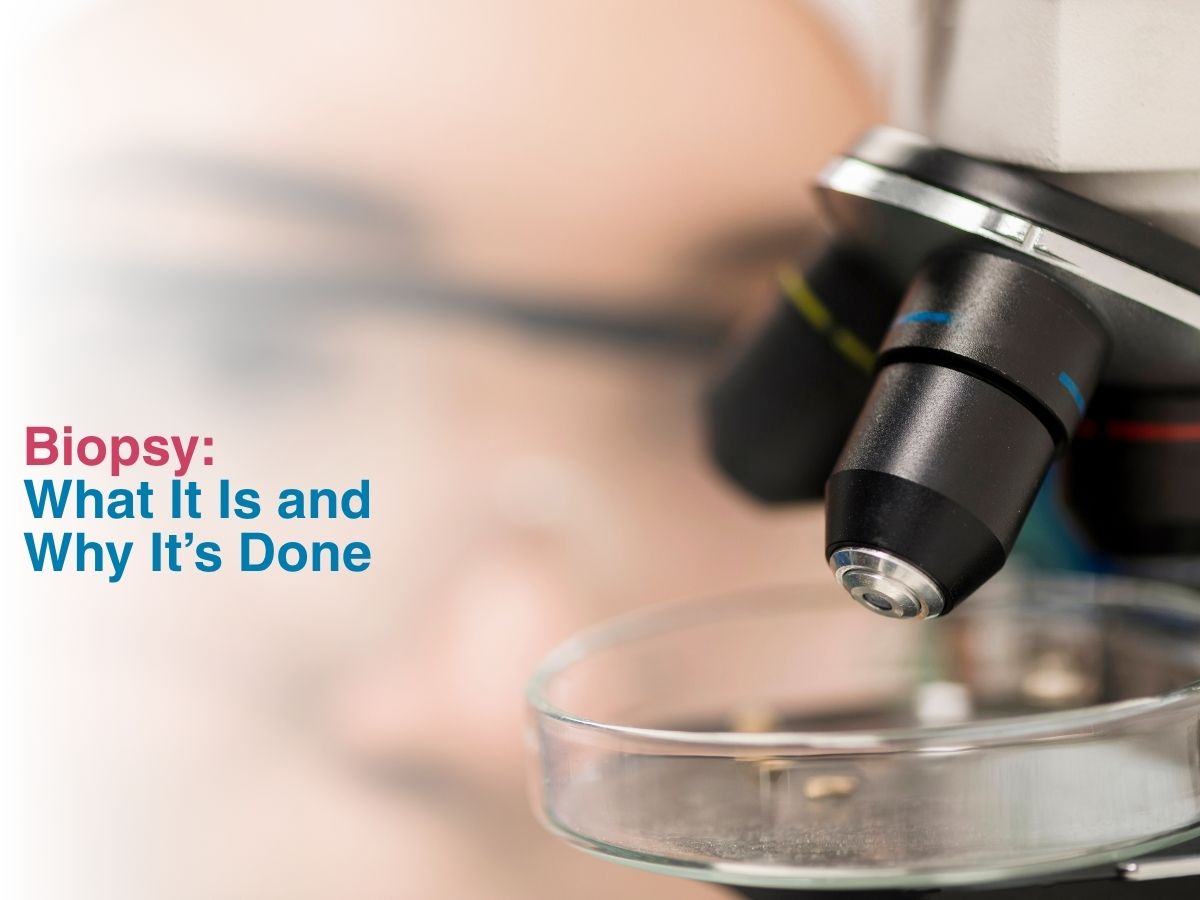
Biopsy: What It Is and Why It’s Done

The term ‘biopsy’ is used by a doctor to derive a sample of tissue from your body, when something looks or feels suspicious. A pathologist is a specialist who looks at these biopsy samples and then studies them closely- to understand if these cells are different from normal ones and if they can be problematic or already are causing issues. Biopsies are also used as tools to monitor any ongoing symptoms like cancer or infections and to differentiate between benign and malignant tumours.
What Is A Biopsy And Why Is It Needed?
Though biopsies are mostly known in the context of cancer diagnosis, it is also used to diagnose conditions like tuberculosis, endometriosis, inflammatory conditions like pancreatitis, hepatitis or nephritis and for autoimmune disorders too. A biopsy is basically a procedure where a piece of tissue is taken for further inspection and testing. Biopsies are normally recommended when the doctor sees something suspicious while imaging a body part or if you begin to show symptoms which are caused by a particular condition.
Types Of Biopsy Procedures And Their Uses-
There are different kinds of biopsies which can be done, depending on which tissue needs to be examined. Some examples include-
- Getting a bone marrow biopsy using a needle which can pierce bone and take marrow out. This is done when a doctor suspects blood cancers and related disorders.
- Cone biopsies are done to remove samples from the cervix. This is done by using a loop that has electric current, which then collects tissue, or a scalper or laser can also be used. Incisional biopsies- means a cut or incision is made to collect tissue from a suspicious lump.
- Liquid biopsies involve taking blood as the tissue sample to diagnose various conditions. Other possibilities include CSF, pleural fluid etc.
- A needle biopsy is when a needle is used to puncture the tumour or lump of tissue to get a sample. Normally used to diagnose lung related conditions.
- A shave biopsy is when a piece of skin is shorn off to study further.
- Punch biopsies involve taking a small circular sample, just like a punching machine does but from paper.
- Sentinel node biopsies check if cancer has spread to other areas of the body or is localised to a particular tissue or region in the body.
How Is A Biopsy Performed And Does It Hurt?
Local anaesthesia is normally given, before the tissue sample or biopsy is taken. So, you won’t have any pain during the procedure but you may have some soreness and pain afterwards, for which you can take painkillers if necessary. You may be asked to stop certain medications and fast for the procedure too, at times. Local anaesthesia means you can go home in a few hours but with general anaesthesia, you may have to stay over at the hospital for a night.
Conclusion
It is pretty rare for complications to arise, after a biopsy is done. But some people report bleeding, soreness and even scarring at times. Your biopsy results will take some time to come, as the pathologist needs to examine the sample closely. Though biopsies are very accurate, false positives do occur at times. For cancers to be detected, biopsies are a gold standard test. Though the test itself may get over soon, waiting for results can be nerve wracking. It is important to remain calm and understand that pathologists have lots of samples to process. Plus, if you notice any suspicious symptoms afterwards, make sure to get in touch with your doctor to see what that is about.






